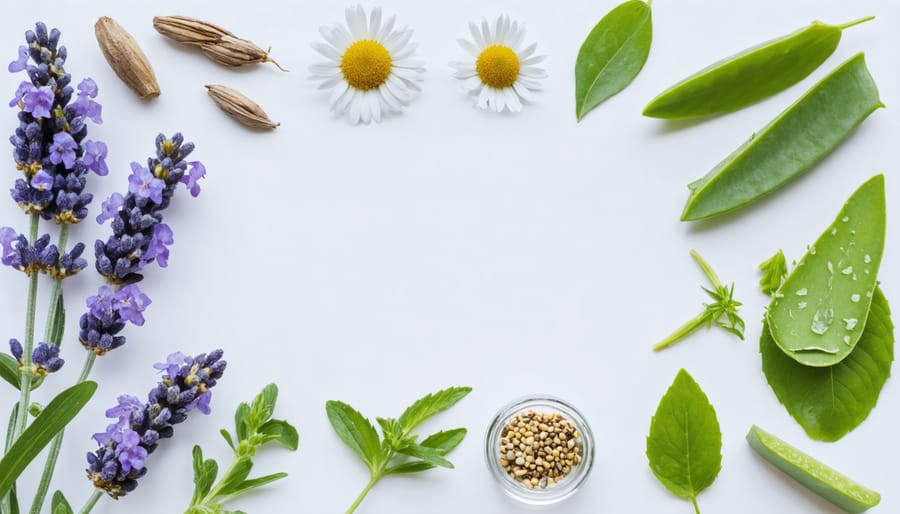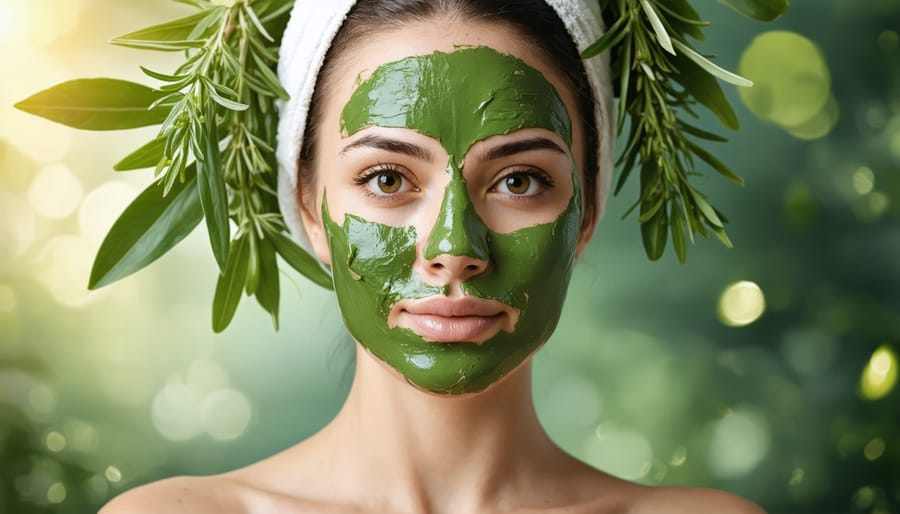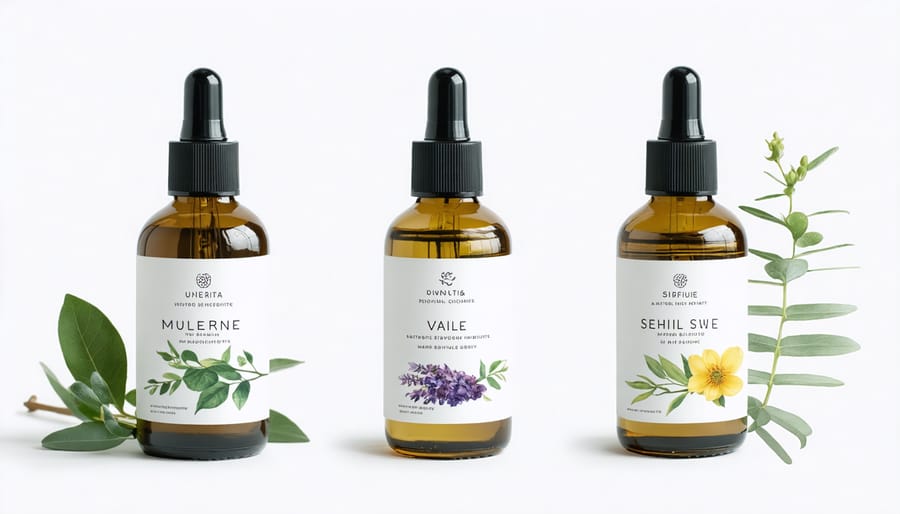
Nature’s most potent skincare solutions aren’t found in synthetic laboratories – they flourish in gardens, forests, and fields around the world. From the antioxidant-rich properties of green tea to the healing powers of calendula flowers, plant-based skincare harnesses centuries of traditional wisdom backed by modern science. Today’s conscious consumers are rediscovering what ancient civilizations knew all along: botanical ingredients offer gentle yet effective solutions for nearly every skin concern.
As someone who struggled with sensitive skin for years, I’ve witnessed firsthand how switching to plant-based products transformed not just my complexion, but my entire approach to self-care. These natural alternatives work in harmony with your skin’s biology, delivering nutrients and active compounds that synthetic ingredients simply can’t replicate. Whether you’re dealing with breakouts, aging concerns, or simply want to embrace a more sustainable beauty routine, plant-based skincare offers a pure, powerful path to radiant skin.
Join me as we explore the fascinating world of botanical beauty, where science meets nature’s wisdom to create effective, earth-friendly skincare solutions that deliver real results. From understanding key ingredients to building your own natural routine, you’ll discover why plant-based skincare isn’t just a trend – it’s a return to the most fundamental form of skin health.
Why Plant-Based Skincare Is Having Its Moment
The Science Behind Natural Ingredients
Ever wonder how botanical ingredients transform your skin? The magic lies in their molecular makeup. Plants have evolved over millions of years to produce compounds that protect and nourish their cells – and surprisingly, these same compounds work wonders for our skin too!
Take antioxidants, for instance. Found abundantly in ingredients like green tea and rosehip oil, these powerful molecules fight free radicals that cause premature aging. Plant-based oils are rich in essential fatty acids that mirror our skin’s natural lipids, making them perfect for maintaining our moisture barrier.
Calendula and chamomile contain anti-inflammatory compounds that calm irritated skin, while aloe vera’s polysaccharides help retain moisture and promote healing. Even humble ingredients like cucumber contain silica, which helps firm and hydrate the skin.
What makes these natural ingredients particularly effective is their biocompatibility with our skin. Unlike synthetic alternatives, plant-based compounds are recognized by our bodies, allowing for better absorption and utilization of their beneficial properties.
Environmental Impact
When we choose plant-based skincare products, we’re not just making a choice that’s better for your skin and the planet – we’re participating in a movement toward more sustainable beauty practices. Traditional skincare products often come with a hefty environmental footprint, from plastic packaging to synthetic ingredients that can harm aquatic ecosystems when washed down our drains.
Plant-based alternatives typically use biodegradable ingredients and often come in eco-friendly packaging. Many brands now opt for glass containers, recyclable materials, or even innovative zero-waste packaging solutions. The cultivation of plant ingredients, when done responsibly, can actually benefit local ecosystems and support sustainable farming practices.
I’ve noticed more brands embracing regenerative agriculture in their ingredient sourcing, which helps restore soil health and biodiversity. This approach not only produces high-quality botanical ingredients but also helps capture carbon from the atmosphere. By choosing plant-based skincare, we’re supporting these earth-friendly practices while creating positive change in the beauty industry, one product at a time.

Essential Herbs in Traditional Skincare
Calming Herbs
When it comes to soothing irritated skin, nature has gifted us with an incredible array of calming herbs that have been used for centuries in traditional beauty rituals. I discovered the magic of these botanical wonders during my own struggle with sensitive skin, and they’ve become an essential part of my daily skincare routine.
Chamomile stands out as a true skincare superhero. This gentle powerhouse contains compounds like bisabolol and chamazulene, which help reduce redness and inflammation. Whether used in a facial steam or as an ingredient in your favorite natural toner, chamomile brings a sense of calm to angry skin.
Lavender isn’t just for helping you sleep better – it’s also a remarkable skin-soother. Its natural anti-inflammatory properties make it perfect for addressing minor skin irritations and balancing oil production. I love using lavender-infused facial mists throughout the day for a refreshing boost that keeps my skin happy.
Other notable calming herbs include calendula, known for its skin-healing properties, and green tea, packed with antioxidants that protect and soothe. Rose is another beautiful addition to any natural skincare routine, offering both emotional and physical benefits with its gentle astringent properties and divine scent.
To incorporate these herbs into your routine, look for products that feature them as primary ingredients, or try making simple DIY treatments like herb-infused oils or gentle facial steams. Just remember to always patch test new ingredients and start slowly – even natural products deserve careful introduction to your skincare routine.
These botanical allies not only calm your skin but also provide a moment of mindful self-care in your daily routine, connecting you to centuries-old beauty wisdom while delivering modern skincare results.
Healing Herbs
Nature has gifted us with incredible healing herbs that have been nurturing skin for centuries. When I first discovered calendula in my grandmother’s garden, I was amazed to learn that this cheerful orange flower could do wonders for irritated skin. Calendula is renowned for its anti-inflammatory properties and ability to promote wound healing, making it perfect for sensitive or troubled skin.
Aloe vera, often called nature’s miracle plant, deserves its reputation as a skincare superstar. I keep an aloe plant on my windowsill for those occasional sunburn emergencies, but it’s so much more than just a sunburn soother. This succulent wonder contains vitamins, minerals, and amino acids that hydrate, calm, and repair skin naturally.
Other healing herbs that deserve a spot in your natural skincare routine include chamomile, known for its gentle soothing properties, and lavender, which not only calms your mind but also helps balance oil production and reduce inflammation. Green tea is another powerful player, packed with antioxidants that fight premature aging and protect against environmental damage.
The beauty of these healing herbs lies in their versatility. You can find them in various forms – from pure botanical extracts and essential oils to infused creams and serums. When choosing products, look for those containing these herbs in their most pure and potent forms, ideally organic and minimally processed.
Remember that while these plants are natural, it’s always wise to do a patch test before applying any new product to your face, as even natural ingredients can cause reactions in some people.
Creating Your Own Plant-Based Skincare Routine
Morning Ritual
Starting your day with a gentle, plant-based morning ritual can set the tone for radiant skin and a peaceful mind. As someone who’s transformed my own routine to embrace natural ingredients, I can’t wait to share these nurturing steps that have made such a difference in my skincare journey.
Begin by cleansing with a mild, plant-based face wash containing ingredients like chamomile or green tea extract. These botanical cleansers remove overnight buildup while maintaining your skin’s natural balance. I love how my skin feels soft and clean, never stripped or tight.
Follow with an alcohol-free herbal toner – rose water or witch hazel are beautiful options that help balance your skin’s pH while providing antioxidant benefits. Simply spritz or pat onto your face with clean hands.
Next, while your skin is still slightly damp, apply a few drops of facial oil rich in plant nutrients. Jojoba, rosehip, or argan oil closely mimic your skin’s natural oils and provide deep nourishment. As you craft your perfect skincare routine, you’ll discover which oils work best for your skin type.
Finally, seal in all that plant-powered goodness with a light moisturizer containing protective botanicals like aloe vera or calendula. Don’t forget to apply a natural mineral sunscreen to shield your skin from environmental damage throughout the day.
Remember, consistency is key when working with natural ingredients. Give your skin time to adjust and embrace the gentle power of plants.
Evening Care
As the day winds down, your evening skincare routine becomes a sacred ritual of self-care and rejuvenation. Plant-based nighttime products work in harmony with your skin’s natural repair cycle, making them perfect companions for overnight restoration.
Start by removing the day’s buildup with a gentle oil cleanser made from nourishing ingredients like jojoba or hemp seed oil. I love using the double-cleansing method, following up with a cream cleanser infused with calming chamomile or lavender. These botanical ingredients effectively dissolve makeup and impurities while maintaining your skin’s delicate moisture barrier.
Next, layer on your treatments. Evening is the perfect time to apply more concentrated plant-based serums and oils, as your skin is most receptive to absorption while you sleep. Look for ingredients like bakuchiol (nature’s retinol alternative), rosehip oil rich in vitamin C, or calendula for its healing properties.
Seal everything in with a rich night cream featuring ingredients like shea butter, evening primrose oil, or blue tansy. These plant-powered moisturizers work overtime to repair, hydrate, and soothe your skin while you rest. For an extra boost, try applying a few drops of facial oil as your final step – I’ve found marula or squalane oil to be especially nurturing without feeling heavy.
Remember, consistency is key with any skincare routine. Give your plant-based products time to work their magic, and wake up to naturally radiant skin.
Weekly Treatments
Treating your skin to a weekly plant-based pampering session isn’t just self-care – it’s an opportunity to harness nature’s most potent ingredients. I love setting aside Sunday evenings for these rejuvenating rituals, and I’ve found that consistency really makes a difference in skin health.
For deep cleansing, try a DIY mask made with French green clay and matcha powder. Mix these with a splash of rosewater until you achieve a smooth paste. This combination helps draw out impurities while delivering antioxidants directly to your skin. Leave it on for 15 minutes while you practice some mindful breathing or catch up on your favorite book.
Another game-changing treatment is a honey and avocado mask. Mash half a ripe avocado with a tablespoon of raw honey and apply it to clean skin. The natural enzymes and healthy fats work together to moisturize and brighten your complexion. My skin always feels incredibly soft after this one!
For those dealing with occasional breakouts, a turmeric and aloe vera gel mask can work wonders. Just remember to patch test any new ingredients first, as even natural substances can cause sensitivity in some people.
End your weekly treatment with a facial massage using your favorite plant-based oil. I find that jojoba or rosehip oil works beautifully for this purpose, helping to boost circulation and enhance the skin’s natural glow.

Shopping Smart for Natural Skincare
As someone who’s been on both sides of the natural skincare counter, I’ve learned that shopping for genuine plant-based products can feel like navigating through a jungle of marketing claims. The key to avoiding greenwashing in natural products starts with becoming a savvy label reader.
First, scan the ingredients list – it should be understandable and predominantly feature plant-based ingredients near the top. Be wary of products that loudly proclaim “natural” on the front but hide synthetic ingredients in fine print. Look for specific plant names (like “Lavandula angustifolia” for lavender) rather than vague terms like “natural fragrance.”
Here’s my tried-and-true method for smart shopping:
– Check certification logos (USDA Organic, COSMOS, EcoCert)
– Research the brand’s transparency about sourcing
– Look for clear ingredient explanations
– Be skeptical of products claiming to be “100% natural” at suspiciously low prices
Don’t feel pressured to replace everything at once. Start with one or two essential products and gradually build your natural skincare collection. I recommend beginning with a cleanser or moisturizer, as these form the foundation of any skincare routine.
Remember that price isn’t always an indicator of quality. Some excellent plant-based products are reasonably priced, while others might command a premium due to rare ingredients or sustainable harvesting practices. The key is finding products that align with both your values and budget.
Consider shopping from local artisanal makers who often provide detailed information about their ingredients and processes. These smaller brands frequently offer pure, plant-based formulations with minimal preservatives and maximum transparency.

Embarking on a plant-based skincare journey is more than just a beauty choice – it’s a commitment to both your skin’s health and environmental sustainability. As we’ve explored throughout this article, nature provides us with an incredible array of ingredients that can transform our skincare routines. From the healing properties of aloe vera to the antioxidant power of green tea, these natural alternatives offer gentle yet effective solutions for various skin concerns.
Remember, transitioning to plant-based skincare doesn’t have to happen overnight. Start small by incorporating one or two natural products into your existing routine and observe how your skin responds. Pay attention to how your skin feels, and don’t be afraid to adjust your routine as needed.
I’ve personally witnessed the amazing transformation in my skin since switching to plant-based products, and I’m constantly inspired by the stories shared by our community members who’ve made similar changes. Whether you’re dealing with sensitivity, aging concerns, or simply seeking a more sustainable beauty routine, nature has an answer for you.
Take that first step today – your skin (and our planet) will thank you for it!



